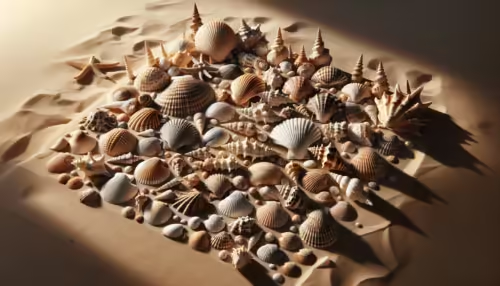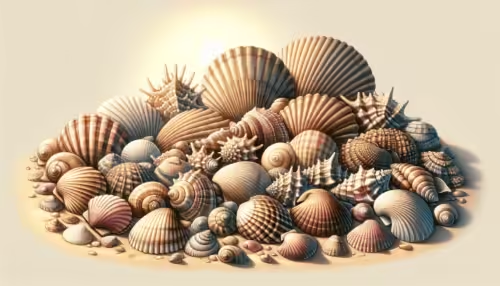How can someone effectively start a collection of seashells?
Building a collection brings not only a sense of accomplishment but also an appreciation for the beauty and diversity of natural objects. Seashells, with their intricate forms and mesmerizing colors, make for a fascinating collection. Of course, having these treasures from shorelines worldwide carries the allure of biology, geology, and even art. But how does one embark on this journey of amassing seashells? This article will delve into the intricacies of starting a seashell collection, ensuring an enriching experience rather than a monotonous gathering of similar objects.

Table of Contents
Defining Seashell Collecting
Collecting seashells can range from an amateur’s passion to a professional pursuit, often known as conchology. While many are drawn to the hobby for its aesthetic pleasure, others engage for scientific study or educational purposes. Collecting responsibly, however, is imperative to both preserve marine ecosystems and maintain biodiversity. Thus, an initial step in this rewarding pastime includes understanding what collecting entails and the ethical considerations it demands.
Historical Context: Seashells in Human Culture
Seashells have captivated human imagination for centuries. Ancient civilizations used them as currency, jewelry, and tools—a testament to their beauty and functionality. In more recent history, the hobby of shell collecting gained notable popularity during the Victorian era, as the exploration of biodiversity became a fashionable trend. Shells became a symbol of taste and culture, with collectors meeting to display and trade their finds. This historical backdrop provides a fascinating perspective on the enduring appeal of seashells.
Current Trends in Seashell Collecting
In today’s world, sustainability has emerged as a crucial consideration in seashell collecting. With increased awareness of environmental conservation, collectors are now more conscientious about where and how they obtain their shells. This means leaning towards collecting those that are naturally found on shores rather than those obtained through live harvesting, which could disrupt marine ecosystems. Furthermore, digital databases and online communities have emerged, allowing collectors to share, categorize, and discuss their collections virtually, broadening the social aspect of the hobby.
The Fundamentals of Seashell Collection
Research and Identification: Understanding basic seashell taxonomy is essential. Seashells belong to various mollusk families, each having distinct shapes, colors, and sizes. Books and online resources are invaluable for beginners aiming to identify and categorize their findings effectively.
Collection Tools and Techniques: Collecting requires specific tools such as mesh bags and soft brushes to safely gather and clean shells without causing damage. Proper techniques ensure the integrity of each shell is maintained, which is fundamental for both aesthetic and scientific value.
Ethical Considerations: Awareness of legal restrictions is crucial; different regions have varying laws about shell collection. Collect only non-living shells and respect areas prohibited for collection to ensure ecological balance.

Case Study: Successful Seashell Collections
A notable example is the collection of Dr. Jose Leal, a curator at The Bailey-Matthews National Shell Museum. Dr. Leal’s collection highlights the importance of diversity and geographical awareness, comprising specimens from disparate global regions. His work underscores the educational potential of collections—his shells are utilized for both study and public displays, showcasing the intersection of art and science.
Benefits and Challenges of Collecting
Benefits
- Educational Value: Shelters a wealth of biological information that is essential for those interested in marine biology and ecology.
- Aesthetic Pleasure: The variety in color and form enhances creative appreciation and artistic inspiration.
- Personal Fulfillment: Offers a sense of discovery and accomplishment as one builds a unique array of natural artifacts.
Challenges
- Preservation: Keeping shells in optimal condition to prevent deterioration requires meticulous care.
- Space Management: Large collections can be space-consuming, requiring systematic organization.
- Ecological Impact: Always a concern to ensure collecting practices do not harm natural habitats.

Contrasting Perspectives on Shell Collecting
- Scientific: Scientists view shells as gateways to understanding marine environments, focusing on their structural and evolutionary significance.
- Commercial: Shells have also been subject to commercialization in jewelry and decor, causing tension with conservation efforts.
- Hobbyist: Casual collectors often prioritize aesthetic value, sometimes blurring ethical lines unless adequately informed about sustainability.
Impact Assessment: Seashell Collecting Practices
Responsible collecting positively impacts both the individual and the broader community by fostering a respect for nature and a curiosity about the natural world. On the community level, responsible practices promote biodiversity conservation and nurture eco-friendly tourism. However, irresponsible collecting or overharvesting can lead to significant ecological harm, including habitat destruction and loss of biodiversity.

Future Directions and Implications
As interest in environmental stewardship grows, it is likely that seashell collecting will evolve towards more sustainable practices, driven by technology and education. Virtual collections and digital databases can provide alternatives for those unable to travel, lessening physical ecological impact. Additionally, burgeoning interest in 3D printing might offer methods to replicate rare shells without disturbing natural populations.
In assessing implications, it’s vital to consider how the wider availability of shells through ethical means can enhance educational programs, supporting marine conservation initiatives and raising awareness about the importance of preserving our oceans.
Closing Thoughts
In conclusion, starting a seashell collection requires more than mere gathering. It involves engaging with a vibrant, diverse world, understanding the interconnectedness of ecosystems, and taking responsibility for environmental impact. By following ethical practices and informed methods, collectors can enjoy the aesthetic pleasure of seashells while contributing to the broader dialogue of biodiversity conservation.
What perspectives or experiences do you have regarding seashell collections? Continue exploring this fascinating topic, and consider how you might integrate conservation principles into your interests.


